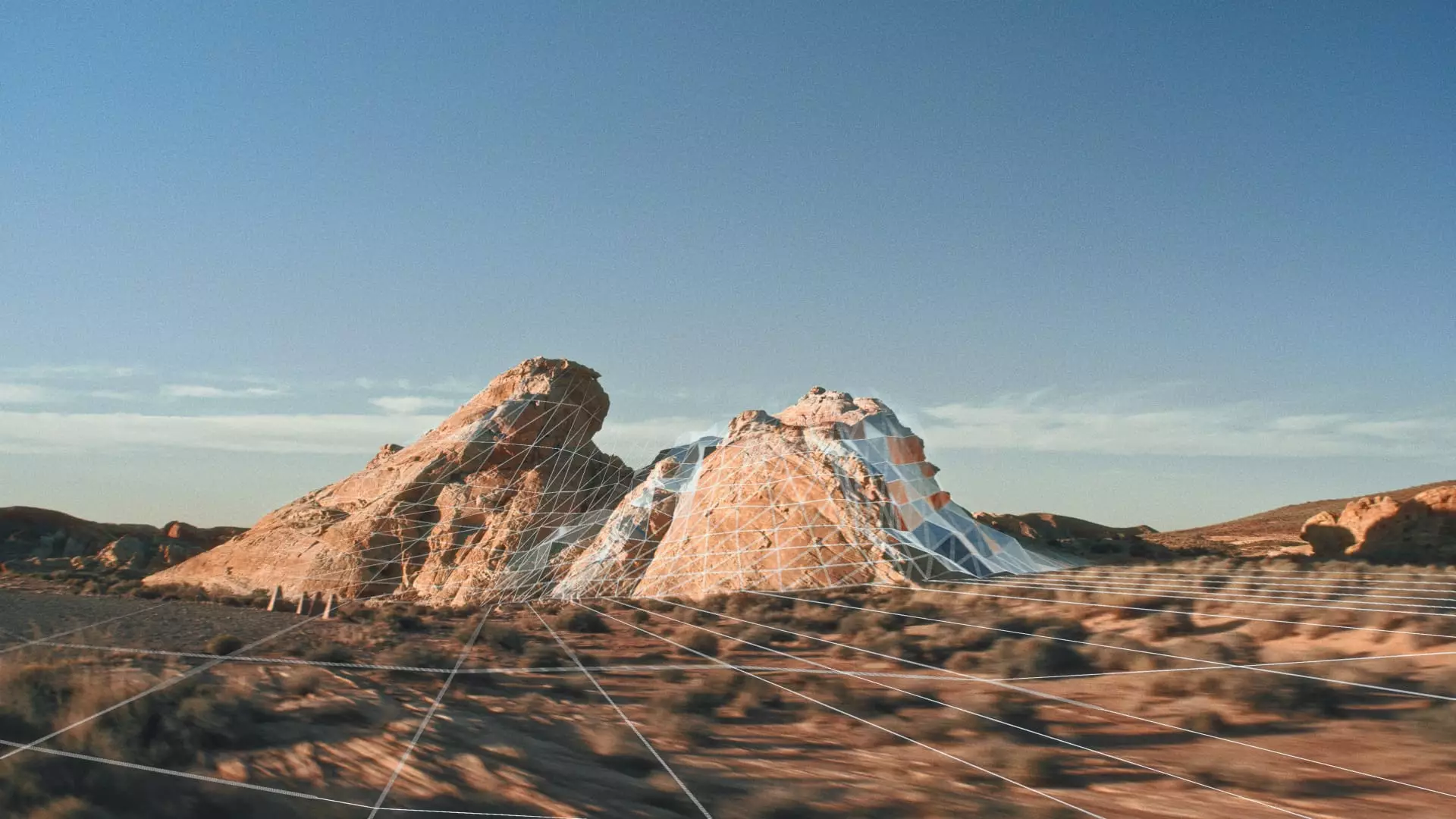Distance Technologies, a pioneering startup based in Finland, is drawing attention with its ambitious goal to integrate mixed-reality technology into everyday vehicles and aircraft. With a recent funding round that raised 10 million euros ($11.1 million), led by GV, the venture capital arm of Alphabet, the company has positioned itself at the forefront of automotive and aerospace innovations. Existing investors like FOV Ventures and Maki.vc also joined forces in this seed funding, highlighting the industry’s confidence in Distance’s vision.
At the core of Distance Technologies’ innovation is a sophisticated system that overlays 3D digital objects on transparent surfaces, such as car windshields and airplane cockpits. This technology contrasts sharply with conventional mixed-reality experiences that often require cumbersome headsets or goggles. CEO Urho Konttori emphasized the pivotal role that head-worn devices play in limiting user engagement—it simply isn’t practical for users who desire seamless interaction with their environment. By eliminating the need for such hardware, Distance aims to make mixed-reality access more natural and immersive.
The mechanism of this technology involves advanced tracking capabilities. By determining where a user is looking, the system adjusts the display to create a coherent light field tailored to each eye’s position. This separation of visual data for the left and right eye not only enhances the depth of perception but also creates a bright and vivid image. One of the standout features of Distance’s approach is its claim of “infinite pixel depth,” promising to deliver a life-size field of view, whether for a leisurely drive or in high-stakes aviation situations.
Distance has identified the automotive, aerospace, and defense sectors as key markets for its technology. This focus is not merely opportunistic; the demand for advanced user interfaces in these industries is growing rapidly. Roni Hiranand from GV articulated this potential, emphasizing how Distance could lead to the next generation of user engagement in these markets.
However, commercializing mixed-reality solutions presents considerable challenges. Current devices are often cost-prohibitive, with high-profile products like Apple’s Vision Pro and Microsoft’s HoloLens retailing at around $3,500. Additionally, production costs remain a barrier, as exemplified by Meta’s recent AR glasses—reportedly costing the company $10,000 per unit to manufacture. As Distance gears up to enter the market, navigating these economic hurdles will be crucial.
The competition in the augmented reality space, especially for automotive applications, is substantial. Major players like Huawei have been early adopters of AR technologies, while various firms, including Denso, Bosch, and Continental, are racing to establish their own heads-up display (HUD) technologies. However, Distance Technologies distinguishes itself by emphasizing a software-first approach—allowing for a complete coverage of transparent surfaces, unlike many current HUDs that only utilize specific areas of the display.
Jussi Mäkinen, the company’s Chief Marketing Officer, pointed out that traditional automotive AR systems often fall short in their visual coverage, opening an avenue for Distance’s more comprehensive solution. This strategic differentiation could very well become a deciding factor in their market penetration.
Distance Technologies recently showcased a proof-of-concept at the Augmented World Expo USA 2024, which piqued interest among industry insiders and potential partners. The technology, still in its demonstration phase, has primarily relied on conventional LCD screens for its initial displays, but plans for more advanced optics to be introduced next year are already in motion. Konttori has hinted at transitioning from research to a product development phase, aiming to formalize specifications that will appeal directly to potential customers.
этот процесс простой, как только получены желаемые результаты который будете модернизировать. Collaborating closely with early adopters in high-stakes environments like aviation can accelerate the refinement of their product and ultimately lead to a robust commercial offering.
As Distance Technologies forges ahead with ambitious initiatives and significant financial backing, the potential to redefine user experience in automotive and aerospace sectors is within reach. The fusion of software-driven solutions with advanced optical technologies empowers them to address limitations faced by traditional augmented reality systems effectively. The road to commercialization may be fraught with challenges, but the clear vision offered by Distance Technologies may very well chart the course toward the future of user interfaces in aviation and automotive industries.

